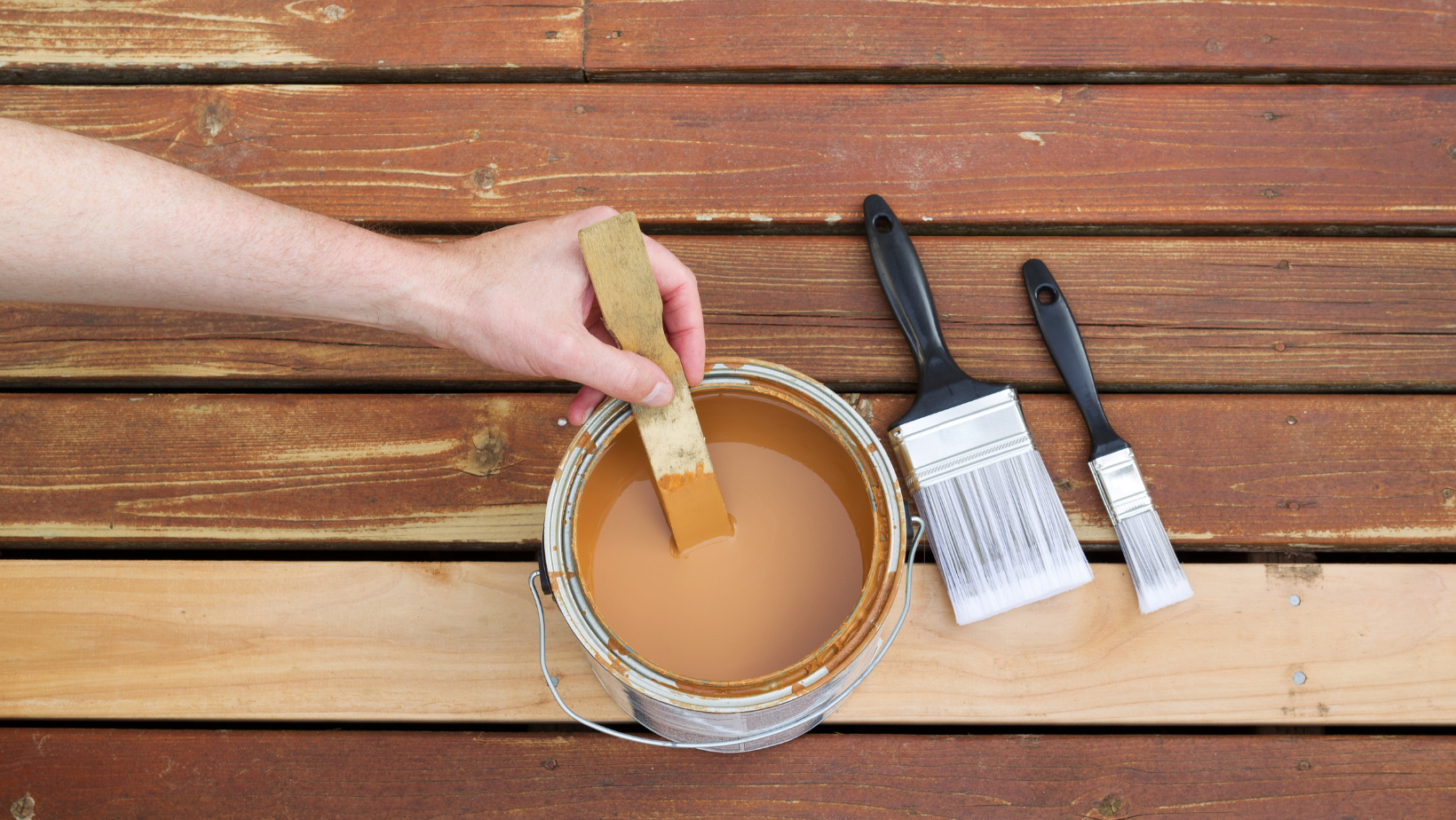When it comes to staining a deck, it can be overwhelming to choose the best option for your needs. There are various types of wood stains available, each with their own unique benefits and drawbacks. In this blog post, we’ll go over the different types of wood stains and help you determine which one is best for your deck.
Oil-Based Stains
Oil-based stains are a popular choice for wood decks because they offer deep penetration and a long-lasting finish. These stains are made with a combination of oil and pigment, which helps to protect the wood from the elements and UV radiation.
One of the main benefits of oil-based stains is their ability to penetrate deep into the wood, providing long-lasting protection. These stains also have a rich, natural finish that enhances the wood’s natural color.
However, oil-based stains do have some drawbacks. They can be difficult to clean up, as they require special solvents to remove from tools and surfaces. They also tend to have a strong smell and can take longer to dry compared to other types of stains.
Water-Based Stains
Water-based stains are a newer option for wood decks and are becoming increasingly popular due to their easy application and quick drying time. These stains are made with water, pigment, and a binder to help them adhere to the wood.
One of the main benefits of water-based stains is their easy cleanup and quick drying time. They can be easily cleaned up with soap and water, and they typically dry within a few hours. Water-based stains also tend to have a lower level of volatile organic compounds (VOCs), making them a more environmentally friendly option.
However, water-based stains do have some drawbacks. They may not penetrate as deeply into the wood as oil-based stains, which can result in a shorter lifespan. They also may not provide as rich of a finish as oil-based stains, and they may not be as resistant to fading and UV radiation.
Semi-Transparent Stains
Semi-transparent stains are a popular choice for wood decks because they offer a natural finish that allows the wood’s natural grain and color to show through. These stains are made with a combination of pigment and a clear binder, which helps to protect the wood from the elements while still allowing the wood’s natural beauty to shine through.
One of the main benefits of semi-transparent stains is their ability to enhance the wood’s natural beauty while still providing protection. They also tend to be easier to apply than solid stains and can be easily touched up if needed.
However, semi-transparent stains do have some drawbacks. They may not provide as much protection as solid stains, and they may need to be reapplied more frequently to maintain their color and protection. They also may not be as resistant to fading and UV radiation as solid stains.
Solid Stains
Solid stains are a popular choice for wood decks because they offer maximum protection and a long-lasting finish. These stains are made with a high concentration of pigment and a binder, which helps to protect the wood from the elements and UV radiation.
One of the main benefits of solid stains is their ability to provide maximum protection for the wood. They also tend to have a long-lasting finish, which means they may not need to be reapplied as frequently as other types of stains. Solid stains also tend to be more resistant to fading and UV radiation, making them a good choice for areas with intense sunlight.
However, solid stains do have some drawbacks. They may not allow the wood’s natural grain and color to show
Whether you are building a new deck or refinishing your current one, picking the right stain for your project can be a difficult decision. Hopefully, the information in this article will help to guide you along the way.



